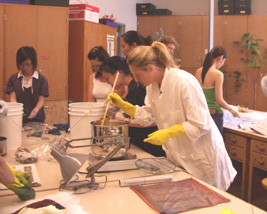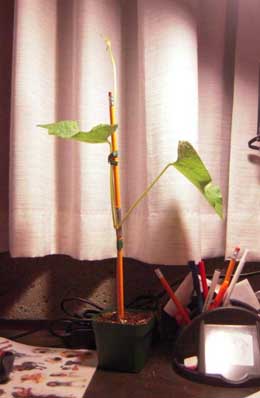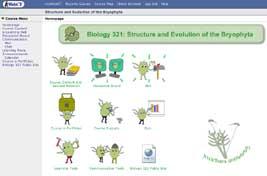 My attitudes toward teaching and learning started to take shape when I was an undergraduate student. I struggled through my first two years, being that unmotivated student we see in our classes. I refer to these years as the “before times”. I developed a very good social life at the expense of my studies. A favourite course in third year was the beginning of “the good times”. A convergence of many elements culminated in good study habits accompanied by good marks. It was like magic. How did this transformation happen? Firstly, I found insects absolutely fascinating. Dr. Scudder’s lectures were captivating and dynamic. Every day after lecture, I reviewed and annotated my notes, enjoyed reading the (very technical) textbook, and developed study questions. I went to lectures better prepared, took more accurate notes, and kept up with the course content. It didn’t take very long before I started using the same system in all my classes. I had become a good learner. I use this experience in my advising sessions with students.
My attitudes toward teaching and learning started to take shape when I was an undergraduate student. I struggled through my first two years, being that unmotivated student we see in our classes. I refer to these years as the “before times”. I developed a very good social life at the expense of my studies. A favourite course in third year was the beginning of “the good times”. A convergence of many elements culminated in good study habits accompanied by good marks. It was like magic. How did this transformation happen? Firstly, I found insects absolutely fascinating. Dr. Scudder’s lectures were captivating and dynamic. Every day after lecture, I reviewed and annotated my notes, enjoyed reading the (very technical) textbook, and developed study questions. I went to lectures better prepared, took more accurate notes, and kept up with the course content. It didn’t take very long before I started using the same system in all my classes. I had become a good learner. I use this experience in my advising sessions with students.
 I like trying new approaches to teaching, but I like to know that there is a possibility of success before I begin. Communicating with students is very important. Monitor how they feel about it helps to shape the activities. They are also interested in why you are doing it. If they think it is just fussy work then they will not buy in, but if they see it has value for them (or even me) they are generally very enthusiastic to see how it will work.
I like trying new approaches to teaching, but I like to know that there is a possibility of success before I begin. Communicating with students is very important. Monitor how they feel about it helps to shape the activities. They are also interested in why you are doing it. If they think it is just fussy work then they will not buy in, but if they see it has value for them (or even me) they are generally very enthusiastic to see how it will work.
In Biology 321 (bryology), outdoor experience is an integral part and not all students are available on weekends.
 I successfully use inverted classroom so that we can go on fieldtrips during class time. The students learn content out of class; I make video presentations they are required to view in lieu of a lecture (using powerpoint and Camtasia, . They were accompanied with a pdf of the lecture (example: Bog Ecology video, PowerPoint pdf). Based on the success of the lecture videos I thought that if I developed videos on concepts students found difficult that they would look at them numerous times outside of class. We viewed the videos in lecture and the response was positive so I thought they would be keen on reviewing them. A student survey at the end of the year indicated that the majority of the class actually didn’t go back to them more than once and that they saw better value when they were shown in class and discussed. They did have value, but not as I intended.
I successfully use inverted classroom so that we can go on fieldtrips during class time. The students learn content out of class; I make video presentations they are required to view in lieu of a lecture (using powerpoint and Camtasia, . They were accompanied with a pdf of the lecture (example: Bog Ecology video, PowerPoint pdf). Based on the success of the lecture videos I thought that if I developed videos on concepts students found difficult that they would look at them numerous times outside of class. We viewed the videos in lecture and the response was positive so I thought they would be keen on reviewing them. A student survey at the end of the year indicated that the majority of the class actually didn’t go back to them more than once and that they saw better value when they were shown in class and discussed. They did have value, but not as I intended.
Lesson: Video and Hand-out (PowerPoint)
 Another unintended outcome occurred in Biology 210 (vascular plants) last year. In the first lab, students planted a bean seed and took it home to watch it grow. The purpose was for them to observe the initial stages of germination in terms of development and function of the different organs. By the time they would see the plant emerge from the soil a lot of development would have been going on underground. I didn’t anticipate that it would become such a captivating project; most students had grown beans as children and I thought they would think it a little silly. They reported on the progress of their Bean Buddy well beyond the intended activity. We followed up with it throughout the term. Students posted pictures (and many even named) their bean plant.
Another unintended outcome occurred in Biology 210 (vascular plants) last year. In the first lab, students planted a bean seed and took it home to watch it grow. The purpose was for them to observe the initial stages of germination in terms of development and function of the different organs. By the time they would see the plant emerge from the soil a lot of development would have been going on underground. I didn’t anticipate that it would become such a captivating project; most students had grown beans as children and I thought they would think it a little silly. They reported on the progress of their Bean Buddy well beyond the intended activity. We followed up with it throughout the term. Students posted pictures (and many even named) their bean plant.
 Joanne Nakonechny (Skylight) and I examined group and individual workspaces in the Biology 321 (bryology) course e-portfolio as a structure through which students learn about mosses, liverworts, and hornworts. The course e-portfolio, as with the more generic portfolio, became a place where students could reflect upon the many different components within the field of bryology and, more generically, of science. Although the course e-portfolio does not cast as wide a net for reflection and integration as does the traditional e-portfolio, it does provide students with the practice of critical reflection for deep structure learning and practice in integrating component parts of discipline knowledge within science. “Bryofolio” use resulted in more engaged students who better supported each other’s learning and were more capable of discussing discipline knowledge and approaches to scientific research. As well, this deeper understanding of bryophytes and the peer learning facilitated through the course portfolio, lead to more scholarly communications about bryophytes to a wider audience through the public course website and the Camosun Bog Restoration Group. One of the main outcomes of this project was that students not only preferred, but processed information much more deeply when they worked in groups than they did as individuals. We provided students with two ways of submitting reflective activities, individually and in groups. In the second year we let them decide in which format to present. Not one student elected to do the work independently. Along with these activities we developed an information processing sheet, IPS. It was originally called the reflection page, but the students found the word reflection distasteful so the exercise was given an alternate name. We wanted to provide a model for students on how to think about the subject at and, more generically, about any subject material they might encounter in subsequent courses. Given student concerns about time constraints, we also wanted the completed activity to provide students with a set of study sheets that would aid them in learning the material for their exams. Students responded in a variety of ways to these sheets. Almost all students saw value in completing them, but some expressed frustration with various questions and the time they took to complete. A number of students realized that the IPS could change the way they approached the subject material and how it was more efficient for retention to start transforming and integrating the new course material as soon as possible after class. A number of students preferred using other study devices so I no longer make the completion of the IPS a requirement; we discuss it at the beginning of the course and students have access to the form as well as other study materials on the course website.
Joanne Nakonechny (Skylight) and I examined group and individual workspaces in the Biology 321 (bryology) course e-portfolio as a structure through which students learn about mosses, liverworts, and hornworts. The course e-portfolio, as with the more generic portfolio, became a place where students could reflect upon the many different components within the field of bryology and, more generically, of science. Although the course e-portfolio does not cast as wide a net for reflection and integration as does the traditional e-portfolio, it does provide students with the practice of critical reflection for deep structure learning and practice in integrating component parts of discipline knowledge within science. “Bryofolio” use resulted in more engaged students who better supported each other’s learning and were more capable of discussing discipline knowledge and approaches to scientific research. As well, this deeper understanding of bryophytes and the peer learning facilitated through the course portfolio, lead to more scholarly communications about bryophytes to a wider audience through the public course website and the Camosun Bog Restoration Group. One of the main outcomes of this project was that students not only preferred, but processed information much more deeply when they worked in groups than they did as individuals. We provided students with two ways of submitting reflective activities, individually and in groups. In the second year we let them decide in which format to present. Not one student elected to do the work independently. Along with these activities we developed an information processing sheet, IPS. It was originally called the reflection page, but the students found the word reflection distasteful so the exercise was given an alternate name. We wanted to provide a model for students on how to think about the subject at and, more generically, about any subject material they might encounter in subsequent courses. Given student concerns about time constraints, we also wanted the completed activity to provide students with a set of study sheets that would aid them in learning the material for their exams. Students responded in a variety of ways to these sheets. Almost all students saw value in completing them, but some expressed frustration with various questions and the time they took to complete. A number of students realized that the IPS could change the way they approached the subject material and how it was more efficient for retention to start transforming and integrating the new course material as soon as possible after class. A number of students preferred using other study devices so I no longer make the completion of the IPS a requirement; we discuss it at the beginning of the course and students have access to the form as well as other study materials on the course website.
Works well:
1. Emphasizing learning objectives. There are much fewer inquiries about what to study for exams. They help students focus.
2. Preloading lectures. Having students do an assignment (crossword puzzle ahead of the lecture on photosynthesis) worked very well this year. The lecture was more a question and answer session.
3. Integration of lab, lecture, and fieldtrip activities. Using images taken during lab and fieldtrips to reflect on what was learned.
4. Showing pictures of student lab preps (names cited on slide). I used them for all purposes including in clicker questions.
4. Student study questions. Students develop their own study questions in each unit (Biology 321). They prefer this over the information processing page. I will need to quantify it this year.
Plans for Improvement:
1. More peer evaluation. I use is a little now, but I am eager to try Calibrated Peer review having heard about it from Rosie Redfield. Like with rubrics it looks like there is a big time output at the beginning, but if it is set up well then it will be an excellent and easy to use learning tool.
2. Better clicker questions. I am still new at clickers and am working on better pedagogy around their presentation.
3. Vegetation Survey Project (Biology 321) – improve guidelines for data analysis.
